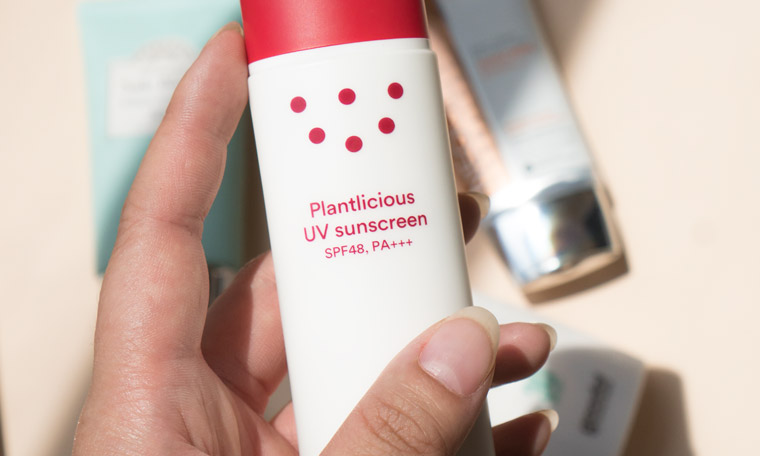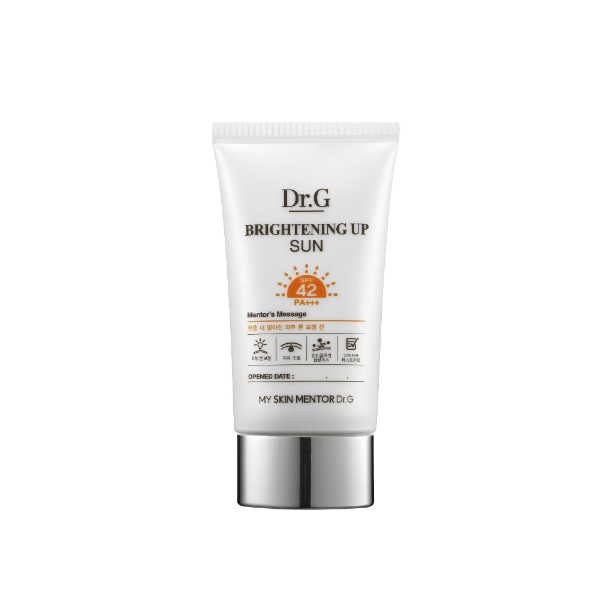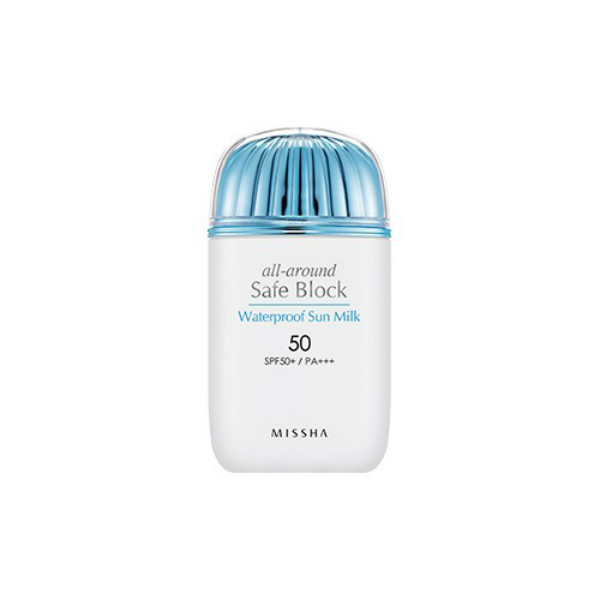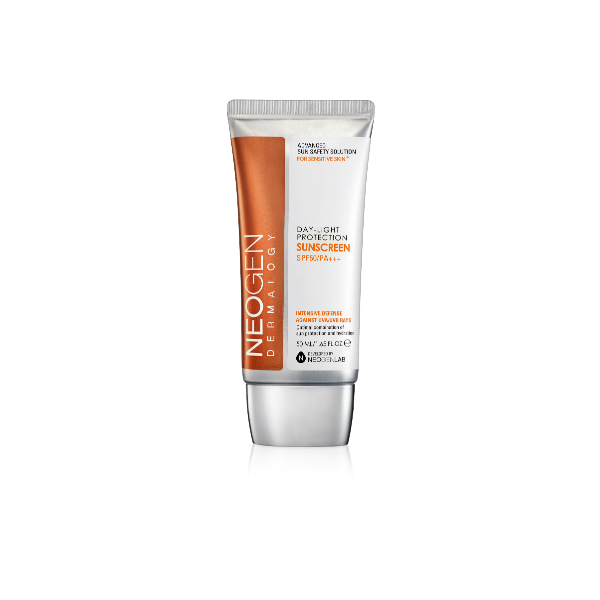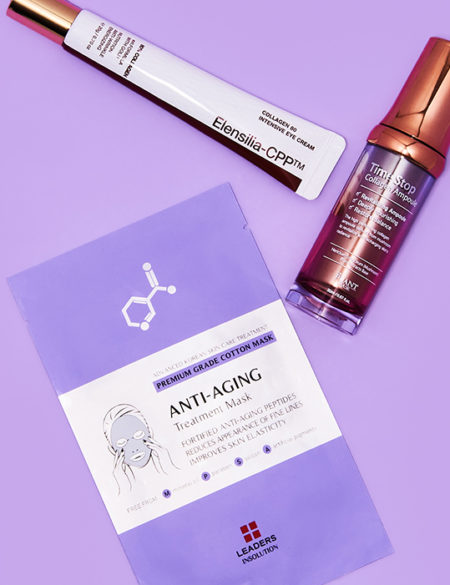Confused about the ingredients in sunscreen and which ones you should put on your skin? Get some clarity here.
Not At All Breaking News: Sunscreen is important for your health. Your mind is blown, we know. But as much as we all know that we should be wearing sunscreen every day (yes, we hear you, mom) even the most sun-savvy of us can get overwhelmed by the SPFs and PA+s, the six-syllable ingredients, and the “how safe are they really” ingredients. It’s okay, sunscreen doesn’t have to be intimidating: All you need is the right information and you’ll finally be on your way to your most confident, comfortable, sun-safe self.
First off, what are “physical” and “chemical” sunscreens?
Despite what the names might suggest, “physical” sunscreens (titanium dioxide and zinc oxide) are, like everything else on planet Earth, made of chemicals. Physical blockers have traditionally been used to reflect UV rays away from the skin by forming a protective layer while “chemical” blockers (avobenzone, octocrylene, octinoxate and the like) soaked into skin, absorbed UV rays, and then spit them back out, often as infrared waves. Concerns have risen over the years about all of that absorption business but modern sunscreen formulations have done a lot to eliminate these major differences between physical and chemical sun protectants.
Where once physical blockers were thick and gloppy, leaving a perpetual white cast on the skin, most of the physical formulas you’ll find on the market now look and feel lighter on the skin thanks to nanotechnology that allows the components to be ground up finer. Meanwhile chemical versions have become more photostable (meaning they don’t break down as readily in sunlight) and are now less likely to be absorbed by the body than in decades past. Many sunscreens on the market now have also moved away from this one-or-the-other thinking and combined physical and chemical blockers for more complete broad-spectrum coverage.
Is one better than the other?
When applied correctly (at least a full ounce to all of the exposed areas of the body, reapplied every two hours or any time you’ve been swimming or sweating heavily) evidence shows physical and chemical blockers are both effective at preventing UV damage.
As with any ingredient, some people’s bodies will have negative reactions to some sun protectants, though the rate of allergic reaction and skin irritation is higher with chemical blockers. Because they’re not absorbed, physical protectants still tend to feel heavier and leave some coloration on skin, though many companies now add tint to their physical sunscreens to make them look less chalky (we’re partial to the soft, glowifying peach shade of My Skin Mentor Dr. G Brightening Up Sun). “Depending on the group performing testing on sunscreen, some may feel that mineral blockers are more effective while others favor chemical blockers,” explains dermatologist Joshua Zeichner.
All of that said, which one works best for you really depends on how your skin reacts to different ingredients and the look and feel that appeals to you most. After all, the best sunscreen is the one you’ll actually wear. All of sunscreens sold on Soko Glam, including the cult favorite Neogen Day-Light Protection Sunscreen, are a mix of chemical and physical sunscreens.
I’ve read some scary things about zinc oxide, is it really safe?
There’s a lot of debate about both zinc oxide and titanium dioxide in sunscreen, largely because of that nontechnology we mentioned earlier which allows them to be refined down to nanoparticles. The worry is that by grinding these ingredients down to such ultra-fine particles, we may make it possible for them to be absorbed by the skin and potentially wreak havoc on our systems. Fortunately, numerous human studies have found that even in nanoparticle form, zinc oxide and titanium dioxide don’t get absorbed by or penetrate deeper than the very surface layer of skin, so you can consider your physical blockers in the clear.
What about those chemical protectants?
How much of various chemical sunscreen ingredients are actually absorbed by the skin is another hotly debated issue. Some animal studies have found that certain chemical blockers (in particular oxybenzone, octinoxate, and homosalate) can have hormone mimicking effects that can throw off the body’s natural hormone balance and possibly increase the risk for cancer.
Exactly how much these studies actually reflect normal sunscreen usage in humans isn’t entirely clear though, since different species and different exposures can drastically effect the results. And considering that skin cancer is the most common form of cancer in the US with about 86% of them attributable to sun exposure, experts still agree that the health benefits of sun protection outweigh the concern over chemical blockers.
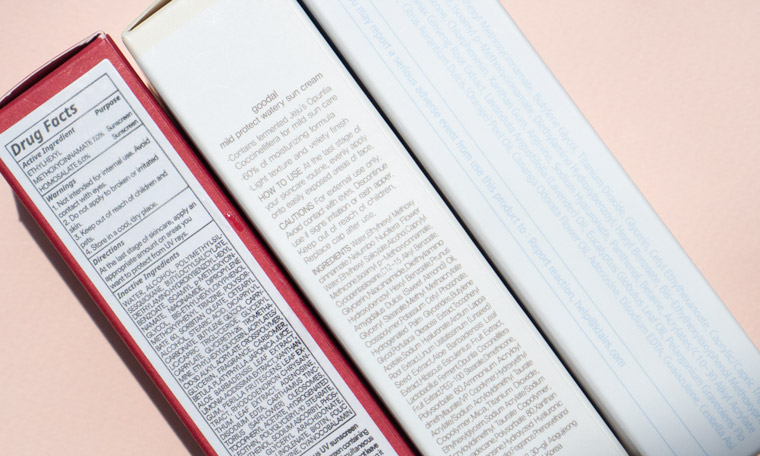
Some people say silicones in sunscreens don’t really wash off, is that true?
Silicones are known for their ability to provide a smooth finish in skin and makeup products, so naturally they tend to crop up in sunscreens, particularly those designed for the face. But since silicones also tend to resist water, there are rumors going around that silicones don’t truly wash off, which they say could prove problematic for both your pores and those chemical absorption issues we talked about.
Well take a deep breath and relax, because Zeichner assures us that, “There is no data showing that silicones used in sunscreen are harmful to the skin. It may take more than one wash to fully remove them, but there is no data to show that they are actually absorbed through the skin into your bloodstream and causing a systemic health problem.”
Okay, but what about that whole “more than one wash” thing? While dermatologist Neil Sadick notes that he has never observed an issue with removing silicones from the skin in his practice, we suggest that the best way to make sure your skin is truly scrupulously clean is to forget about “one wash” altogether and go for the double-cleanse. After all, Korean women are the queens of sunscreen application, and double-cleansing is a Korean beauty staple. Coincidence? We think not.
Why are some sunscreen ingredients approved in other countries but not the US?
If you’ve ever used a Korean sunscreen, you’ve probably noticed that the ingredient label reads a little differently from the American versions you might be used to. That’s because the ingredients okayed for use in both countries vary a lot thanks to approval processes they have to go through to be considered safe.
In the US, sunscreen in considered an over-the-counter drug and as such is the purview of the FDA. There are good sides to this: being beholden to the FDA means that sunscreens that don’t measure up can be held legally accountable for their failure, and ensures that all sunscreens that hit the US market have been SPF tested by their producer.
Unfortunately, there are also downsides: the FDA is famously understaffed (meaning there aren’t enough people to oversee product testing or comb through data to approve new ingredients) and historically reluctant to give new sun protectors the stamp of approval due to what they consider a lack of data proving the ingredients are safe in the long-term (It’s worth noting that the sunscreen ingredients currently in use in the US were approved because they were already in use when the first requirements were set out by the FDA in the 1970s and likely wouldn’t be able to pass the FDA’s current requirements either).
In fact, it’s been nearly 20 years since a new sun protectant ingredient was approved for use by US manufacturers, despite the Sunscreen Innovation Act that passed through congress in 2014 which theoretically streamlined the process for sunscreen ingredient approval.
Does that mean imported sunscreens aren’t safe?
It depends on who you ask. Korean and European sunscreen ingredients all have to pass safety standards in their home countries, but many of those countries have set up their parameters to allow more technologically advanced ingredients to reach the market faster than in the US model. Newer UVA and UVB blockers that offer more complete protection, larger molecular size (that means less chance of being absorbed by the body) and break down less from sun exposure are available in imported sunscreens (we’re big fans of the Missha Waterproof Sun Milk which uses SPF-fan fave ethylhexyl methoxycinnamate to keep rays at bay.) Many of them have been used for years and even decades in their home countries without issues.
“Generally speaking these newer UVA blockers, such as tinosorb, are safe to use on the skin, and in fact may provide superior protection to what we are currently using,” says Zeichner, adding, “I look forward to the day that the FDA updates its sunscreen monogram to allow many of these ingredients to be incorporated.”
Still, others, like Sadick, take a more cautious approach. “I think products that are approved in Europe or South Korea are unproven in the US, and although it is unlikely they have any potential to harm, there are always so many other products that are available and that have been FDA approved.” Editor’s note: All of the sunscreens sold on Soko Glam are FDA approved.
Bottom line:
Though all sunscreen ingredients, American or otherwise, are heavily studied, the reality is that regular sunscreen use is still a relatively new practice, and it’s unlikely we will know for certain the long-term effects of any given sunscreen ingredient for a long time to come.


